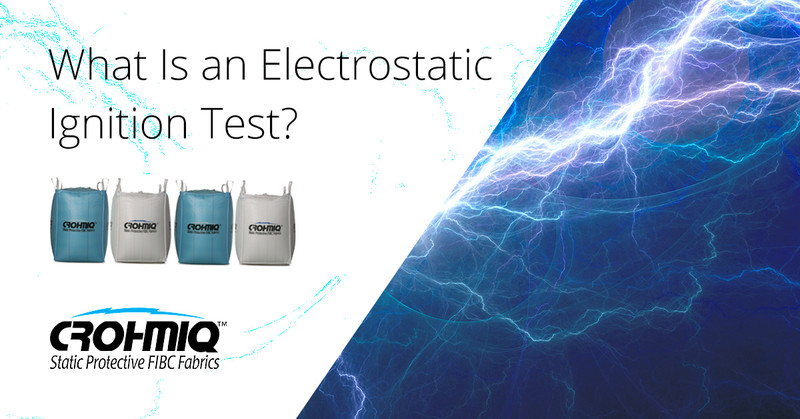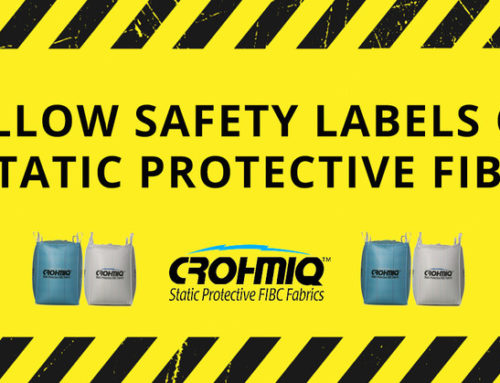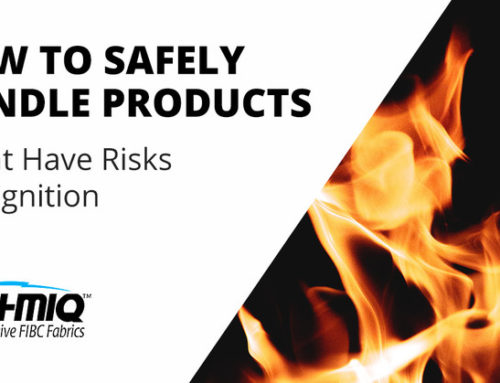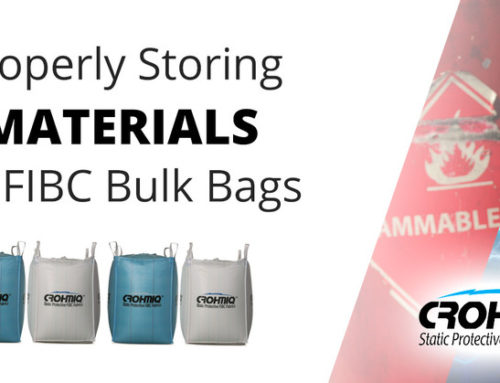The goal of an electrostatic ignition test is to ensure that Type D FIBC bags are reliable and safe to use. There are several tests that can be run on the fabric and other elements of the bag, but this one is extremely important, especially when those bags are going to be used in flammable or explosive atmospheres.
These tests are meant to provide important information about the usability and reliability of these products in potentially hazardous conditions to ensure the safety for those end users who are working with these bags every day.
How Ignition Tests are Performed
These ignition tests have been developed over many years by a wide range of independent authorities. The procedures are designed to simulate the exact conditions that are often found in industries where FIBC bags are used.
Since these reusable bags will be repeatedly filled and emptied with powders, granules, or pellets, they can quickly and repeatedly generate an electrostatic charge.
In order for these tests to legitimately qualify the bags as safe, they must demonstrate that, even under repeated charging, no incendiary discharges will be produced from the bag itself.
The test parameters for these tests are selected to really challenge what each bag can handle. This means that the antistatic properties are put to the test under the severest conditions possible to ensure that they can handle real-world working environments.
Universal Testing
In order for these tests to be valid and provide usable information, they must be universally accepted and employed throughout the industry. This type of standardized test procedures can ensure that the correct tests are performed under the correct conditions across the board.
The ISO Technical Committee TC122 is responsible for maintaining standardization in the field of packaging, which means they are involved with everything from terminology and definitions to packaging dimensions, performance requirements, and tests.
The IEC Electrotechnical Technical Committee TC101, on the other hand, is responsible for ensuring standardization in the field of electrostatics. This group is responsible for testing methods that evaluate the generation, retention, and dissipation of electrostatic charges. It is also in charge of determining the effect of electrostatic discharges and other electrostatic phenomena.
Together, committees like these are able to establish and maintain the level of standardization required to create the safest products possible.
What Are the Test Parameters?
FIBCs are subjected to very stringent electrostatic tests that involve a wide range of parameters, including:
-
Temperature and humidity – The amount of moisture in the air can have a huge impact on the materials of the bag, leading to differences in how the static charges accumulate and discharge.
-
Charging current – The speed at which a bag is filled or emptied can impact the level of charging currents.
-
Minimum ignition energy – This is the lowest level of energy in an electrostatic discharge that could cause an ignition.
-
Gas composition – The gas used in the testing must be mixed with air to achieve the minimum ignition energy. This must be controlled very precisely because even small changes in the composition could make it too easy for the bag to pass the test.
-
Gas flow rate – As gas exits the probe that is used for incendiary testing, it can be diluted by the surrounding air. The test must minimize this dilution effect to maintain the proper MIE.
-
Number of tests or repeated tests – A statistically significant number of tests must be performed in order to get workable data. Electrostatic ignitions can be difficult to predict and repeat, so it’s important to perform these tests enough times to make sure you’re getting true results.
Continuous Safety Certification™ (CSC™)
It’s not enough to test once and assume that all is going to go well.
To ensure that CROHMIQ® Type D static protective bags continue to provide the safety that users require, tests are conducted in Texene’s performance test laboratory under the Continuous Safety Certification Program.
This is a unique program that ensures that after the initial safety qualifications are met, random samples of the bags produced here are retested to make sure they continue to provide the safety that end-users require.
Ensuring Your Safety
At Texene, we maintain two world-class electrostatic FIBC test laboratories at our headquarters in Florida. These labs are used for electrostatic ignition tests on Type D FIBC, as well as several other tests on fabrics and other materials.
This is where we also conduct our Continuous Safety Certification to ensure the ongoing safety and reliability of the electrostatic protection of our FIBC labs.
When you work in any hazardous situations, loading and unloading materials and products that can create an incendiary electrostatic charge, this level of standardized testing is a critical part of the process.
Be sure to contact us to learn more about our testing methods and what we do to keep your people safe.





